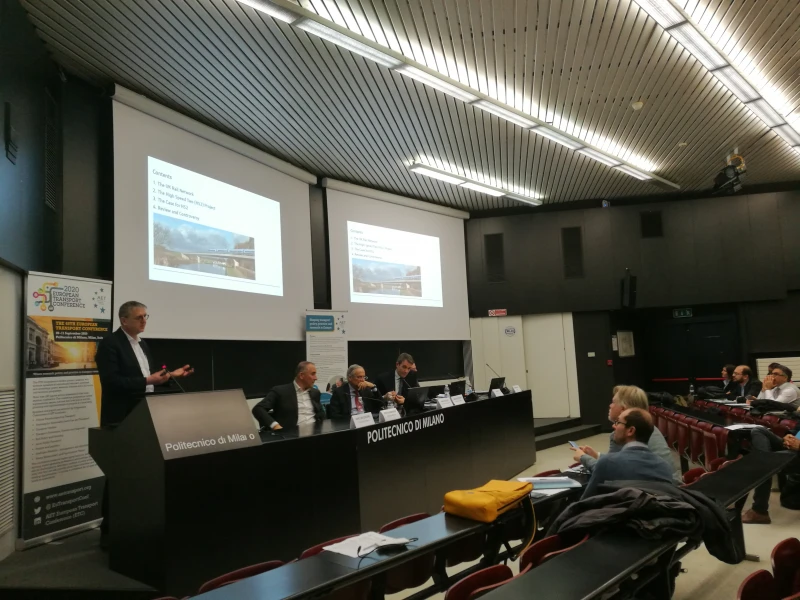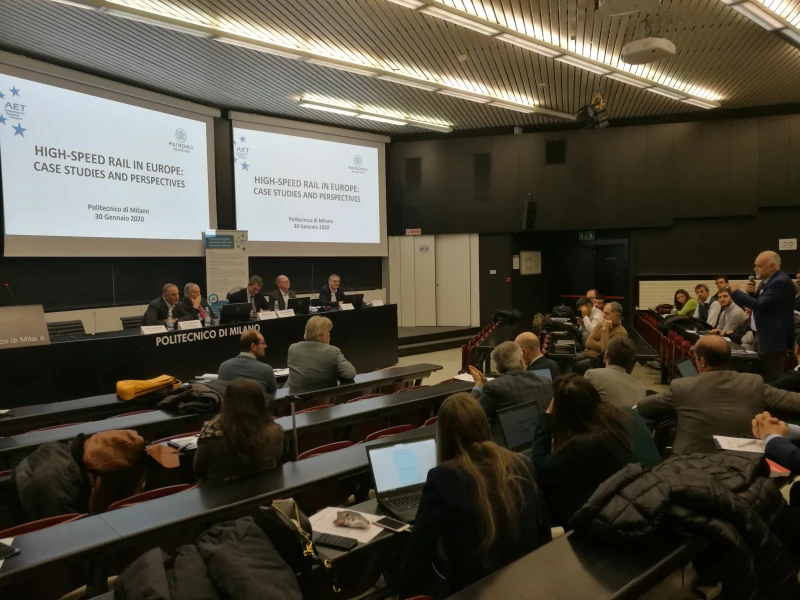-
Past ETC Papers

Browse, search and view papers from the past AET Conferences.
-
Members' Area

AET promotes networking and exchange of ideas, information and opportunities amongst members.
ETC Conference Papers
Conference Past Papers Repository
VMÖ – a new strategic transport model for Austria
Seminar
Day 2 (10 Oct 2019), Session 6, Model Development, 14:00 - 15:30
Status
Accepted, documents submitted
Submitted by / Abstract owner
Stefan Grebe
Authors
Stefan Grebe (Significance), Gerard de Jong (Significance and ITS Leeds), Christian Wampera (bmvit -Austrian Federal Ministry of Transport, Innovation and Technology), Christian Obermayer (OEBB Infrastruktur AG), Ronald Pompl (ASFINAG - Autobahnen- und Sc
Short abstract
Currently the new national transport model Austria (VMÖ) is developed. The passenger model is designed as a disaggregated tour-based model and for freight an aggregated-disaggregated-aggregated approach is followed.
Abstract
The current national transport model Austria (Verkehrsmodell Österreich, VMÖ) was developed in 2002. For the preparation of a new traffic forecast for several time horizons up to the year 2040 and beyond (Verkehrsprognose Österreich, VPÖ 2040+) a more up-to-date model is necessary. The requirement for this new model is that both progress that has been made in the development of transport models in recent years and up-to-date sources are incorporated. In a first step to develop the new Austrian transport model, Significance has carried out a pilot study. In this paper the outcomes of the pilot study and the status of the model development are being presented.
An appropriate model specification is characterized by meeting the critical requirements of those who use the model and / or use its results. Therefore, the model requirements and limitations for the VMÖ and VPÖ 2040+ have been defined together with the clients and other stakeholders as starting point of the project. With the wish-list finished, the model specification has been developed step by step involving the client at all decisions.
The passenger model will be disaggregated tour-based model with 5 basic steps and some extensions for special applications. The basic steps are the tour generation, tour distribution, mode choice (for the main mode of transport of the tour), departure time choice and the route assignment. With these steps the traffic of Austrian residents will be estimated based on the trip diary survey “Österreich Unterwegs”. The extensions mentioned relate to traffic of persons whose residence is not in Austria or for whom no behavioral data are available from the survey (for example: tourist traffic, transit traffic, destination traffic from abroad). The number of zones will be approximately 5000. In the model a special focus is on incorporating recent trends in mode choice like “park and ride” and other multimodal chains.
The freight part of the model will be an Aggregated - Disaggregated - Aggregated (ADA) model. This model consists of three steps: In the first aggregated step the goods flows between approximately 500 production and consumption (PC) zones are modelled based on the results of an input-output-model. These are goods flows between production sites and consumption with transport chains, which can consist of several modes of transport. These flows are disaggregated to firm-to-firm flows. In the second step, the choice of shipment size and transport chain is modelled for these disaggregated flows. Each change of the mode of transport creates a new origin-destination (OD) relationship. In the third step, the OD relations are aggregated for the individual modes and assignment to the networks.
The network in Austria will be based on the Graph Integration Platform (GIP), a joint, nationwide transport graph, which provides a digital map of Austria's network for all modes of transport. For the rest of Europe the Network will be based on TransTools 3. In the network assignment, passenger transport takes into account freight traffic and vice versa. This is achieved by a joint network assignment of passenger and freight traffic. For public transport the assignment is based on timetables. For individual transport with passenger cars and road freight, a quasi-dynamic road transport assignment will be developed. In the quasi-dynamic approach, congestion effects can be modelled more realistically than in static models without running into the problem of very long computation times of dynamic assignments. The forecasts of travel demand for future years will be based on accurately known pattern in the base-year. In practice this will be realized by applying a pivot-point approach (with the changes) on the base matrices.
For the estimations of both passenger and freight model new Stated Preference (SP) data will be collected within the project. The purpose is to disentangle the correlation between travel/transport time and costs, to collect information on time period choice and on transport chain choice in freight transport.
As part of the project, a reference scenario and two alternative scenarios will be defined. The model results of these scenarios will result in the official Austrian traffic forecast (VPÖ 2040+). This will be used for national studies, for studies of the Austrian states and municipalities.
Programme committee
Transport Models
Documents:

Association For
European Transport
Forester House
Doctors Lane
Henley-in-Arden
Warwickshire, UK
B95 5AW
+44 (0) 15 64 793552
VAT number: 710 1866 64
Conference Supporters & Endorsers




Legal Entity
The Association for European Transport is registered as an Association ('vereniging') with the Chamber of Commerce for Haaglanden in The Netherlands under company number 27170096.
Built on Zenario




